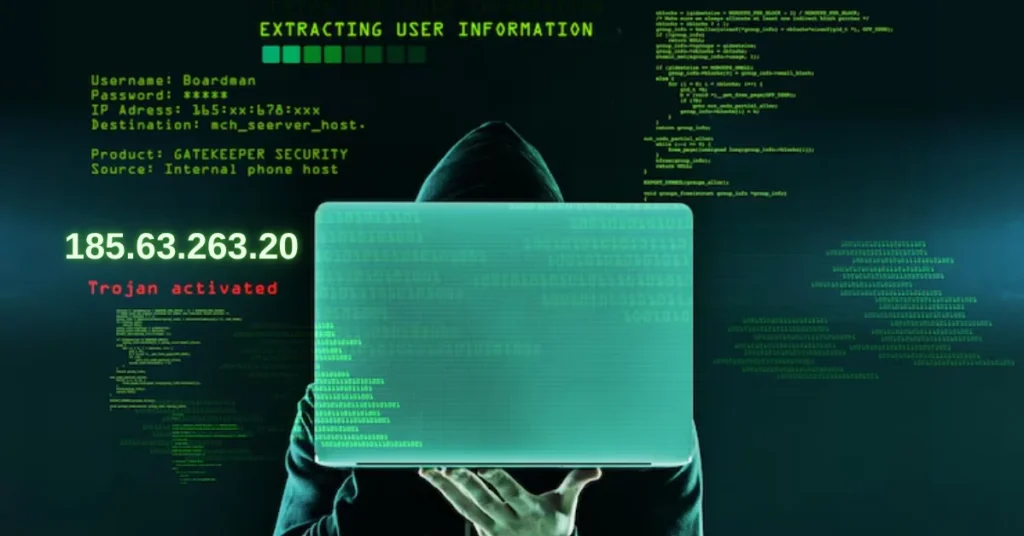Introduction
Ever stumbled across something like 185.63.263.20 and thought, “Huh? Looks like a valid IP, but something’s off”? You’re not alone. In a world wired by IP addresses, a simple error like this can snowball into bigger issues—broken connections, DNS failures, and even security nightmares. So let’s unravel this cryptic code and learn how to avoid future mishaps.
Understanding IP Addresses
What is an IP Address?
Think of an IP address as your device’s street address on the internet. It tells the web where your device lives so data can find you. Without it, you’re pretty much a ghost online.
IPv4 vs IPv6 – What’s the Difference?
IPv4 looks like this: 192.168.1.1
IPv6? Something like: 2001:0db8:85a3:0000:0000:8a2e:0370:7334
IPv4 has been around since the dawn of the internet, but it’s running out of space—thus the rise of IPv6, which provides trillions of new address combinations.
Structure of a Valid IPv4 Address
IPv4 addresses consist of four numbers, each ranging from 0 to 255, separated by dots. Simple, right? Until someone throws in a number like 263. Uh-oh…
The Breakdown of 185.63.263.20
Why 185.63.263.20 Is Invalid
Let’s zoom in. The number 263 sticks out like a sore thumb. In IPv4, no section (or octet) can be above 255.
The Technical Violation: Numbers > 255
Your router, server, or browser will throw a fit when seeing 263. It’s like trying to dial a phone number with too many digits—nothing connects.
Human Error vs System Glitch
This could be a simple typo—someone mistyped 236 or 253. Or it might be a flawed automated script that generated a bad IP.
Common Causes of Invalid IP Errors
Typos and Manual Misconfiguration
Let’s face it—humans make mistakes. Entering IPs manually into DNS records, firewall rules, or server configs can lead to an invalid mess.
Faulty Scripts and Automation Errors
If your code auto-generates IPs (say for logs or config files), a broken loop or bad logic can output invalid addresses like 185.63.263.20.
Misleading DNS Resolution Issues
Sometimes DNS servers misroute or misresolve, pointing to a non-existent IP. It’s rare, but it happens.
How Invalid IPs Affect Your Network
Broken Connections and Failed Requests
Ever clicked a link and stared at a loading screen forever? That’s a common result of invalid IPs—your browser doesn’t know where to go.
DNS Errors and Timeout Issues
DNS can’t resolve bad IPs, leading to annoying timeouts or “Server Not Found” errors.
Security Risks from Invalid Entries
Hackers love chaos. Invalid IPs in logs or systems may be red flags for injection attacks, spoofing, or worse.
YOU MUST READ: Decipher the Code ZPV BSF BXFTPNF and Unlock Hidden Secrets
How to Spot and Decode Invalid IPs
Use of IP Validation Tools
Sites like ipaddressguide.com or whatismyipaddress.com offer simple tools to check if an IP is legit.
Manual Checking Techniques
Check each octet—anything over 255 is a no-go. If you see something like 263, you’ve got an issue.
Scripting Checks for Automation Logs
Running a quick script in Python, Bash, or PowerShell can filter out invalid IPs from large datasets.
Fixing and Preventing Invalid IP Issues
Implementing Proper Input Validation
Always validate user or system input before saving it into databases or config files.
Regular Auditing of Server Configs
Make it a habit to review your network configurations weekly. You’ll thank yourself later.
Automating IP Sanitization
Use scripts to auto-check and clean IPs in logs, config files, and form entries.
Best Practices for IP Management
Always Double-Check Logs
Logs can hide invalid entries that cause major bugs later. Scan them regularly.
Use CIDR for Better Clarity
CIDR notation (like 192.168.0.0/24) helps reduce IP errors by simplifying network blocks.
Educate Your Team About IP Standards
Teach the basics of IP formats to everyone touching your systems—one less thing to worry about.
Real-World Examples
When Invalid IPs Crashed Entire Systems
A misconfigured firewall rule using an invalid IP once caused a major CDN to go down for millions of users. It took hours to trace the root cause.
Lessons Learned from Tech Giants
Big companies invest in automation and validation tools for a reason—they’ve learned the hard way that IP errors are expensive.
YOU MUST READ: faqvehicle .com: Your Smart Guide to Vehicle Tips and Insights
Tools to Help You Handle IPs Better
Free Online IP Checkers
Use tools like:
- IPVoid
- MXToolbox
- WhatIsMyIP.com
Network Diagnostic Software
Wireshark, Angry IP Scanner, and Nmap help analyze IP traffic and catch invalids.
Server-Side Validation Utilities
Frameworks like Django or Laravel have built-in validators to filter out malformed IPs.
How Developers Can Avoid These Errors
Code-Level Validation Snippets
A simple Python example:
pythonCopyEditimport ipaddress
def validate_ip(ip):
try:
ipaddress.ip_address(ip)
return True
except ValueError:
return False
Using Regex for IP Structure
A basic regex for IPv4:^(25[0-5]|2[0-4][0-9]|[01]?[0-9][0-9]?)\.{3}(25[0-5]|2[0-4][0-9]|[01]?[0-9][0-9]?)$
Future of IP Addressing
The Shift to IPv6
IPv6 eliminates many of IPv4’s limitations—including the narrow 0–255 octet range. But it comes with its own complexity.
Smarter Validation Protocols with AI
AI is being used to flag anomalies in real-time network traffic, including malformed or spoofed IP addresses.
Conclusion
In the digital world, one wrong number can ruin everything. The IP address 185.63.263.20 may look innocent, but it’s a reminder that attention to detail matters. From understanding how IPs work to implementing smart checks and tools, preventing these errors can save you time, money, and major headaches.
YOU MUST READ: Akcine Bendrove: Powering Future Industries with Synergy
FAQs
What is the main issue with 185.63.263.20?
The third octet, 263, exceeds the IPv4 limit of 255, making the entire address invalid.
Can an invalid IP harm my website?
Yes. It can cause DNS failures, block traffic, and even expose your system to security threats.
How can I validate an IP address?
Use tools or scripts that check whether each segment falls within the valid range (0–255 for IPv4).
Is IPv6 more secure than IPv4?
IPv6 includes better encryption and integrity features, but both require good configuration for optimal security.
What’s the easiest way to detect IP errors?
Use automated validation scripts or online IP checking tools for fast and accurate results.






